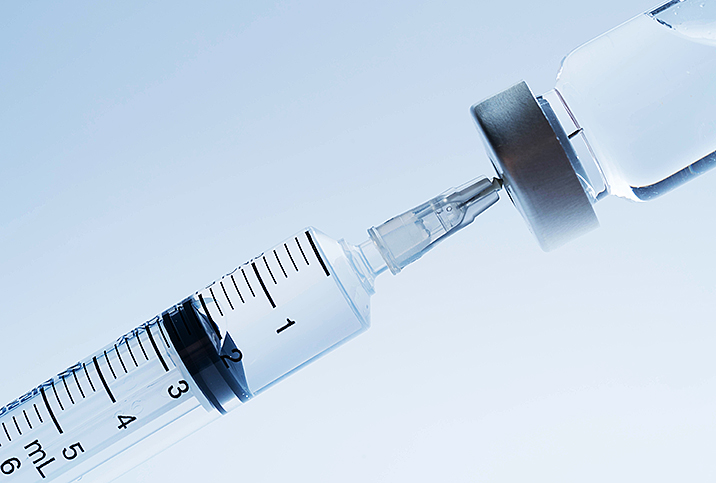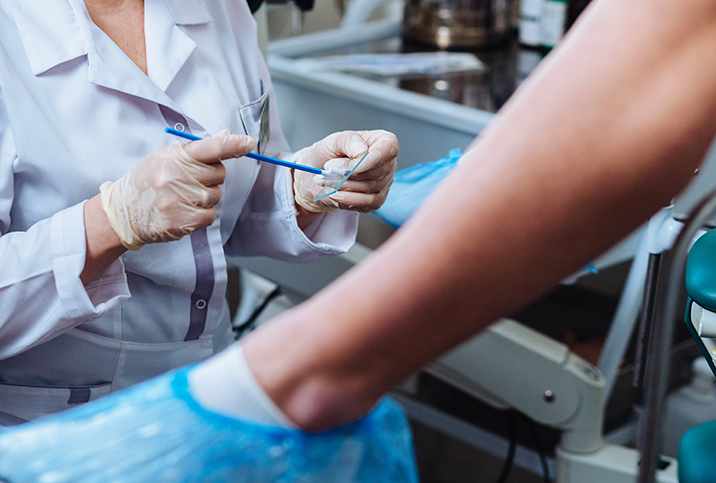More Cases of Cervical Cancer Linked to HPV Than Previously Thought

A 2022 study in the Journal of Clinical Oncology revealed that more cases of cervical cancer than previously thought may be linked to human papillomavirus (HPV).
More than 95 percent of all cervical cancer cases are due to HPV, according to the World Health Organization. In 2020, an estimated 604,000 women were diagnosed with cervical cancer, which is currently the fourth most frequent cancer in women worldwide.
When detected early, cervical cancer can be treated promptly and even cured. HPV vaccination for both boys and girls between 9 and 14 years of age is one method of primary prevention to help protect against HPV infection and subsequent cervical cancer.
It's important to note that HPV can also cause genital warts in all sexes, as well as several other forms of cancer, including vulvar, vaginal, penile, anal and throat.
Types of HPV and prognosis
The authors of the Journal of Clinical Oncology study used RNA sequencing to identify high-risk (hr)HPV infections. This technology showed that 169 of 392 cervical cancers initially identified as HPV-negative were actually hrHPV-positive. Researchers believe that hrHPV is the major cause of invasive cervical cancer.
However, women with hrHPV-positive tumors may actually face lower rates of mortality, stated Jiayao Lei, Ph.D., an epidemiologist at the Karolinska Institutet in Stockholm and lead author of the study.
"We have observed a better prognosis among cervical cancer cases with high-risk HPV-positive tumors compared to those that are high-risk HPV-negative," Lei said.
Women with hrHPV-positive tumors may actually face lower rates of mortality.
The study found women with hrHPV-positive cancers had a 43 percent lower excess mortality over the course of five years.
Lei emphasized that hrHPV-positive cancer is usually found in certain populations, leading to a higher risk of developing cervical cancer.
"High-risk HPV tumors are more common among older women and when cancer is detected in advanced stages," she said.
"Low-risk HPV will not cause cancer. In general, the body will clear it. High-risk HPV will persist—about 10 percent of HPV infections are long-lasting," explained Stephanie Blank, M.D., director of gynecologic oncology for the Mount Sinai Health System in New York City.
The importance of HPV vaccination and screenings
What do these findings mean for women who are HPV-positive? Blank emphasized the importance of having a healthy lifestyle and getting screened.
"If someone has HPV, the best ways to mitigate cancer risk are following up on screening recommendations, not smoking, getting HPV vaccination, doing anything that bolsters the immune system and having a healthy lifestyle," Blank said.
The vaccine protects against high-risk strains of HPV and is approved up to age 45 for all individuals, so talk to your doctor if you didn't receive it as a child.
Blank also reassured that most people with HPV do not go on to develop cervical cancer.
"It takes 10 or more years for an HPV infection to progress to cancer," she stated.
Lei also emphasized the importance of cervical cancer screening for reducing your risk.
"Screening can detect precancerous lesions which, if left untreated, can develop into cancer. It can also detect cervical cancer at an early stage," Lei said.
The American College of Obstetricians and Gynecologists recommends a Pap smear every three years for women between the ages of 21 and 65, and hrHPV testing every five years for women ages 30 to 65.
Even if you get a Pap smear every few years, it's important to schedule an annual pelvic exam with your healthcare provider. This exam allows your OB-GYN to evaluate other risk factors and issues, and gives you the opportunity to ask any questions that may have arisen in the past year.
Women with HPV should be aware of symptoms to look out for that may indicate cervical cancer. Abnormal vaginal bleeding, discharge, odor, pain with sex, pelvic pain and leg swelling are all signs to watch for, Blank said. Knowing your body and alerting your healthcare provider of any changes can make all the difference in detecting cervical cancer early.
Be proactive about prevention
Since we know HPV and cervical cancer are closely linked, future research is expected to focus on preventive measures and how they can become more effective.
"The link between HPV and cervical cancer has been very well-established. Now we will continue to evaluate the effectiveness of the preventive programs and scale up the coverage of those programs," Lei explained.
It's important that parents get their children vaccinated against HPV before they become sexually active. The Centers for Disease Control and Prevention (CDC) recommends all boys and girls receive the vaccine at age 11 or 12, though the vaccine regimen can be started as early as age 9 or as late as age 26. The vaccine is the first step toward preventing cervical cancer as well as genital warts and other cancers caused by HPV.
The vaccine may be less effective for people older than 26, but it is approved up to age 45, so speak with your healthcare provider to see if it's recommended for you.
For women younger than 21 who are sexually active, consider asking your healthcare provider about getting a Pap smear. HPV is transmitted primarily through sexual contact, including oral sex and anal sex, and infection can begin shortly after the onset of sexual activity.
Be aware of your cervical cancer risk if you have HPV and talk to your healthcare provider about screening. While most people with HPV do not develop cancer, it's important to continue to be screened and be aware of any changes to your reproductive health.



















